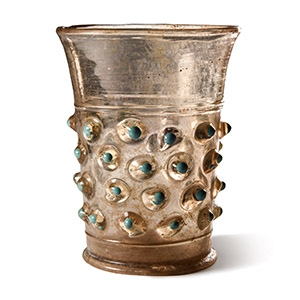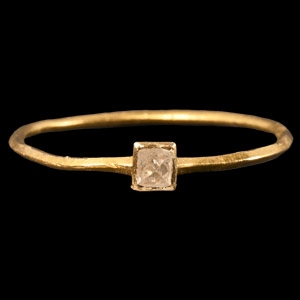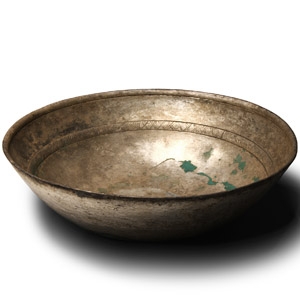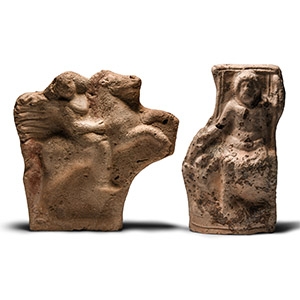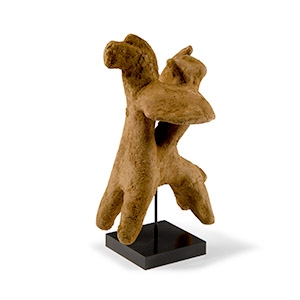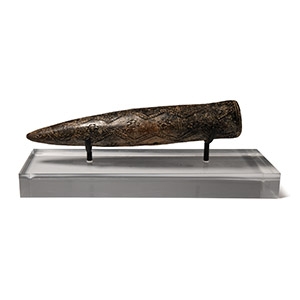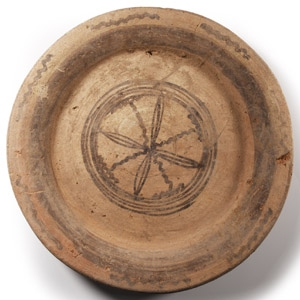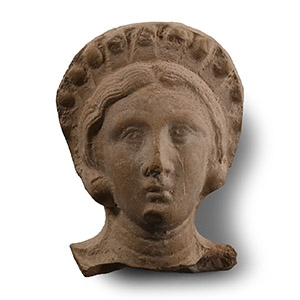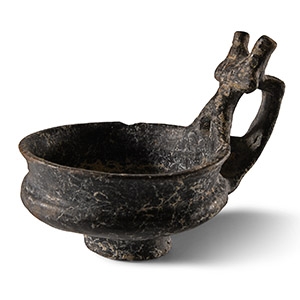Home > Auctions > 5 - 9 December 2023
Ancient Art, Antiquities, Natural History & Coins
Auction Highlights:
From a late Japanese specialist collector, 1970-2000s.
Cf. Maierovskii III Burial-mound no. 4/2002, Burial no. 3B, Moscow, State Historical Museum, inv. no. 112873, list Б 2078/77, in Treister, M., 'Parthian and Early Sasanian “Imports” in the Burials of the Nomads of Eastern Europe (2nd Century BCE-3rd Century CE)' in Choref, M.M., Materials in Archaeology and History of Ancient and Medieval Crimea, Moscow, 2018, pp.118-210, fig.4, 1-3, for similar bowl.
Similar segment-shaped silver bowls with partial gilding, decorated on the inside with friezes in the form of garlands or wickerwork, have been found in many nomad mounds in the Caucasus region. Treister attributes them to Parthian workshops. Such cups could also be undecorated or decorated only with a frieze of Ionian cymatium along the edge.
From a late Japanese specialist collector, 1970-2000s.
Ex old English collection.
London art market, pre 2000.
Property of a London, UK, gentleman.
Acquired on the German art market before 2000.
From an EU collection before 2020.
Ex old English collection.
London art market, pre 2000.
Property of a London, UK, gentleman.
Cf. Chadour, A.B., Rings. The Alice and Louis Koch Collection, volume I, Leeds, 1994, item 71.
Ex private European collection.
with Genève Enchères, 14 December 2017, lot 863.
Cf. Bel, N., Giroire, C., Gombert, F., Rutschowscaya, M.H., L'Orient romain et byzantin au Louvre, Arles / Paris, 2012, p.224, fig.205, for identical cavalryman (Louvre AO 10221).
The costume of Parthian nobles consisted of a tunic or wrapped jacket, trousers and boots/footwear, generally typical of a riding dress. Interestingly, the right side of the tunic was knee-length (such as those seen om early Sassanian noblemen depicted in the Persepolis graffiti) but the left side of the tunic, for many Parthian cavalrymen, appeared shorter and only reached to the upper thigh.
Acquired before 1990.
From an old German collection.
Cf. Marantidou, P., Terracotta statues and figurines of Cypriote type found in the Aegean. Provenance studies, Limassol, 2009, pls.XIII no.SAH69, XXXII, no.CYP50, for the type.
Terracotta figurines of horse and rider were common grave offerings in Boeotia, northwest of Attica, particularly during the 6th century B.C. Representations of warriors on horseback were already widespread in the Geometric Period, and widely used in Cyprus, during this period.
US private collection.
with DuMouchelles Auction, Detroit, 18 February 2023, lot 1123.
London, UK, collection, 1990s.
Ex Parisian dealers including Jean-Phillipe Mariaud de Serres; subsequently dispersed with other pieces at auction.
French private collection of a French lady, acquired in the 1980s.
Accompanied by a copy of an illustrated three page collector's cataloguing document.
Cf. Marshall, F.H., Catalogue of the Jewellery, Greek, Etruscan and Roman, in the Department of Antiquities, British Museum, London, 1911, p.XL.
UK private collection.
Acquired Spink, York, UK, 2009.
Property of a Nottinghamshire gentleman.
Cf. Capano, A., 'Il culto di Demetra nella Lucania antica,' in Basilicata Regione. Notizie, 2017, pp.128-151, fig.23, votive head from San Chirico Nuovo.
The head is probably from a cult statuette of Demeter. Statuettes of the goddess, seated or standing, or even busts, are well documented in the south of Italy, both among the Greek colonists and the local populations; many have been excavated from regional sanctuaries.
Belgium (Uccle) – Haynault Ventes Publiques, Collectibles Auction, 21 September 2021, lot 15.
Property of a South Australian private collector, with collection reference 21.100.
Accompanied by a detailed collector's catalogue page including description and photograph.
Villanovan culture is often regarded as the earliest phase of Etruscan civilisation in the Iron Age.
361 - 372 of 2409 LOTS

.jpg)


.jpg)

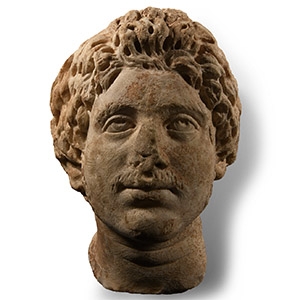
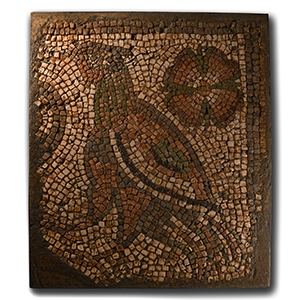
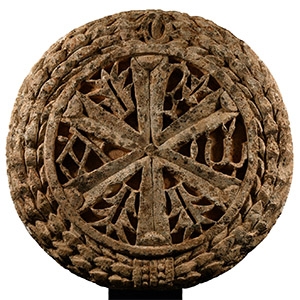


.jpg)


.jpg)
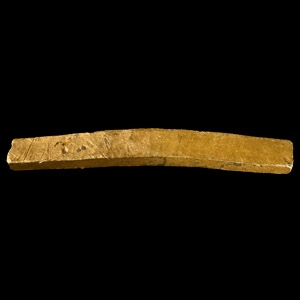
.jpg)
